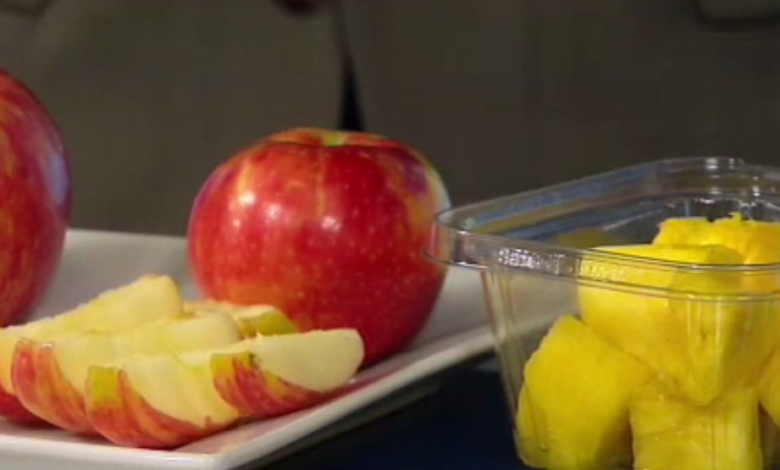‘When is my next snack?’: Pediatrician’s tips to help kids avoid summer weight gain

WASHINGTON (7News) — The last bell is about to ring for kids and teens across the country, turning structured school days into sedentary summer vacations, increasing the risk of weight gain and the development of unhealthy habits for many.
The 8 to 12 weeks of summer vacation is a break from the demands of coursework, sports and other extracurricular activities. Absence from a structured day can lead to an increase in screen time and unhealthy foods and a decrease in sleep and physical activity.
7News Health and Wellness Reporter Victoria Sanchez spoke with Kaiser Permanente Pediatrician Dr. Christie Brown about how families can prevent weight gain during the summer months.
“Don’t single out one member of the family,” Dr. Brown said.
Everyone can benefit from healthy habits and making sure everyone is included can prevent stigma and lead to lasting lifestyle changes. It’s important to start early as overweight or obese preschoolers are 5 times more likely to be overweight or obese as adults, according to the Centers for Disease Control and Prevention.
Victoria Tip: “I keep a clear, plastic candy jar on my kitchen counter. If someone in our family wants something sweet, it’s there. Having it see-through also let’s us know if we might be over-indulging but doesn’t call anyone out.”
“I talk to kids about intuitive eating, so noticing when they are full and when they are hungry. If you’re feeling hungry, is it, ‘Am I really hungry or am I just bored, do I just want that food or have I already just eaten lunch an hour ago?’ And trying to avoid distractions when you’re eating. So, trying to turn off the TV, stop scrolling though your cell phone while you’re eating, because you’re not noticing when you’ve had enough,” she suggested.
SEE ALSO | 7News On Your Side: Breaking down summer childcare costs in the DMV
Victoria Tip: “When it’s dinner time, I’ll plug my phone in to charge. It keeps it out of my hands and will have more battery life after I eat.”
During a school day, kids and teens know the schedule for breaks, lunch and when it’s time to go home for dinner.
“When they’re at home, they’re often like, ‘When is my next snack?’” said Dr. Brown.
To keep kids grazing the kitchen all day, lay out snacks that they’re responsible for divvying up throughout the day.
“If they eat them all upfront or if they can learn to separate it throughout the day, these are the snacks for the day. So, trying to avoid just going to the pantry over and over again,” Dr. Brown explained.
“As parents, it’s our job to choose how often they can eat and what their options are, and they chose how much of it. Trying to give them the structure, offering them the healthy food choices as much as you can.”
When it comes to food choices, Dr. Brown said to choose the options with higher water content. You will feel fuller eating foods that are less calorie dense, like picking grapes over raisins. Grapes are 82 percent water.
To avoid over-eating at mealtimes, use a smaller plate. This will make the portion seem bigger. “Studies showed that halving the plate size led to a 30% reduction in amount of food consumed on average,” an article in Science Daily said.
Victoria Tip: “I use Ikea plastic kids’ plates for most of my meals. You can get a pack of six for $2.99. I’ve noticed I’m eating less since switching plates.”
Getting kids involved in growing food can help expand food options they might previously have passed on. Windowsill herbs or outdoor vegetable gardens are good starting points.
Victoria Tip: “I have a nice herb garden on my front porch. Dollar Tree sells herb and vegetable seed packets for $0.25 each. There isn’t much variety but it’s a good start. The store also has inexpensive pots and planters too. Home Depot has a bigger selection of seeds that cost $1.69-$2.49 a pack.”




